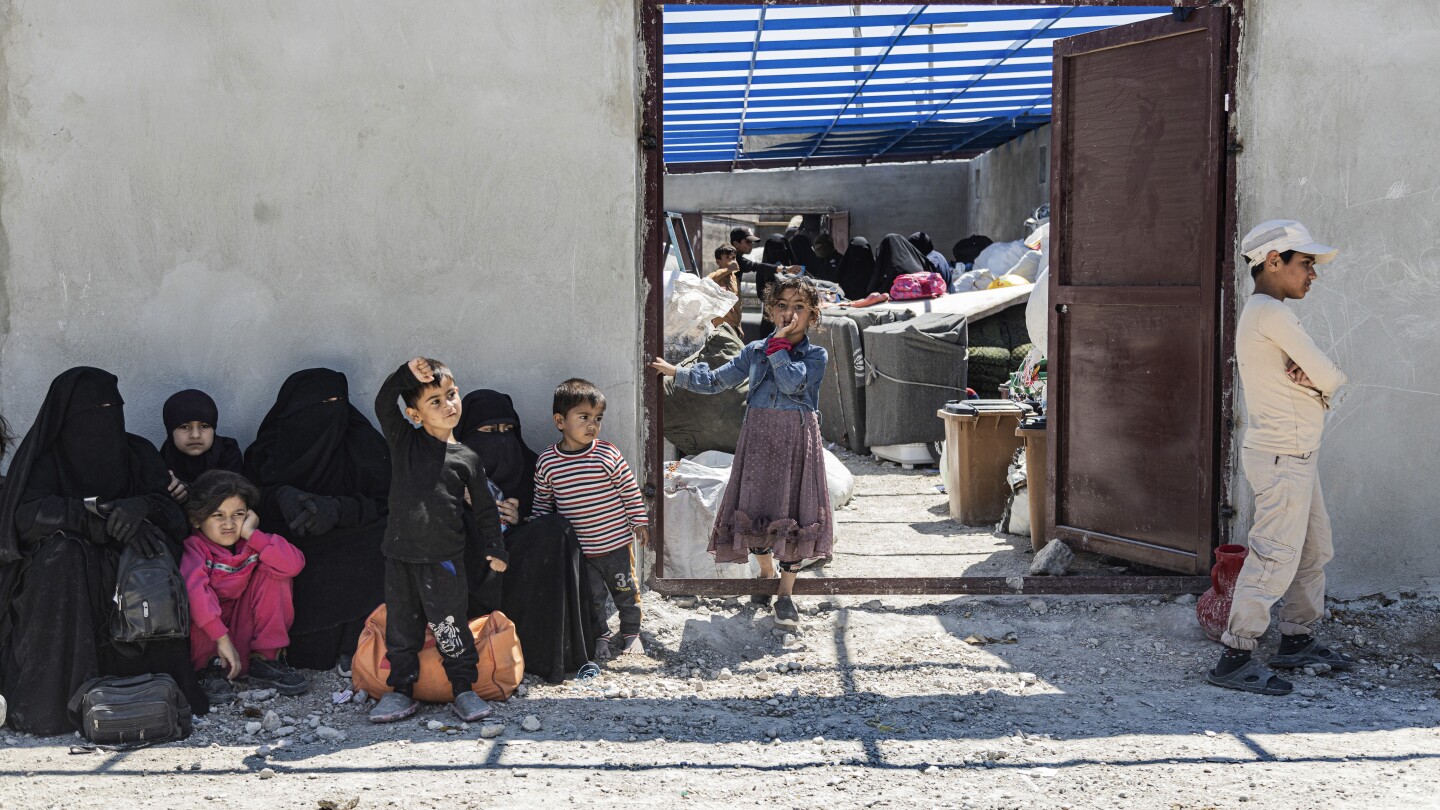AL-HOL CAMP, Syria (AP) — Scores of Syrian women and children linked to the Islamic State group left a sprawling camp in northeast Syria Wednesday and headed home to the eastern province of Deir el-Zour following mediation by tribal leaders.
The latest batch of people to leave al-Hol camp, which houses wives, widows, children and other family members of IS militants, came as repatriations by foreign countries have increased in recent months in an attempt to reduce the population of the facility that at its peak five years ago housed 73,000 people.
Beginning in the early hours of the day, 254 people from 69 families piled their belongings into trucks before climbing on board and moving south under the protection of members of the local U.S.-backed and Kurdish-led police force to their hometowns in Deir el-Zour.
They were the 54th group of Syrians to leave the camp over the past few years and the first in 2024, according to the camp’s director, Jihan Hanan.
“I feel I was born again,” said Anwar al-Hussein, 50, who had been at the camp for more than six years. Standing next to his 7-year-old son, he said the boy did not go to school during the stay at the camp and hopefully now he can have a normal life. The man was taken to the camp as he happened to be in the last area controlled by IS but proven not to be a member of the extremist group.
The Syrian Observatory for Human Rights, an opposition war monitor, said the return of Syrians to their hometowns came after an agreement was reached between tribal leaders from Deir el-Zour and Kurdish-led authorities in northeast Syria.
“We have no desire to keep the residents of northeast Syria at al-Hol,” Hanan said.
She told The Associated Press that the camp’s population now is about 42,700. Of these, more than 18,000 are Iraqis, while Syrians number more than 16,600.
The rest, some 6,000, mostly women and children from 44 other countries, are held at al-Hol’s heavily-guarded area known as the Annex. They are generally considered the most die-hard IS supporters among the camp residents.
In 2014, IS declared a caliphate in large parts of Iraq and Syria and attracted tens of thousands of supporters from around the world. The extremists were defeated by a U.S.-led coalition in Iraq in 2017 and in Syria in 2019. Tens of thousands of people linked to the group were taken to al-Hol camp close to the Iraqi border.
Following the rise of IS a decade ago, some countries stripped some of their citizens who had headed to Syria and Iraq to join IS of their nationalities.
Hanan said that over the past five years about 30,000 people, mostly Iraqis and Syrians, have left the camp.
“God willing, we will leave the camp safely and return to normal life,” said Ali Ramadan Madloul, 56, who has been living in the camp for seven years. The man, who is heading to his hometown of Khasham, said he has not seen his mother since then, and his children have grown up during his absence.
Maitha al-Raja, 38, said she had been at the camp for six years adding that crimes have recently increased inside the camp, especially theft because of lack of jobs and widespread poverty. “I am happy I will see my only son,” said the woman who wore a black robe that only showed her eyes.
She said there are some innocent people in the camp who are stuck inside, some of whom are sick and need treatment.
On Tuesday, the United States said it has repatriated 11 of its citizens from al-Hol and Roj camps, the largest Washington has carried out from camps in northeast Syria to date.
Although repatriations have increased over the past year with neighboring Iraq and former Soviet Union republics leading such moves, many countries remain reluctant to bring back citizens from the camps.
In Late April, Iraq repatriated nearly 700 of its citizens days after Kurdish-led authorities repatriated 50 women and children from al-Hol and Roj camps to Tajikistan.
___
Associated Press writer Bassem Mroue in Beirut contributed to this report.

